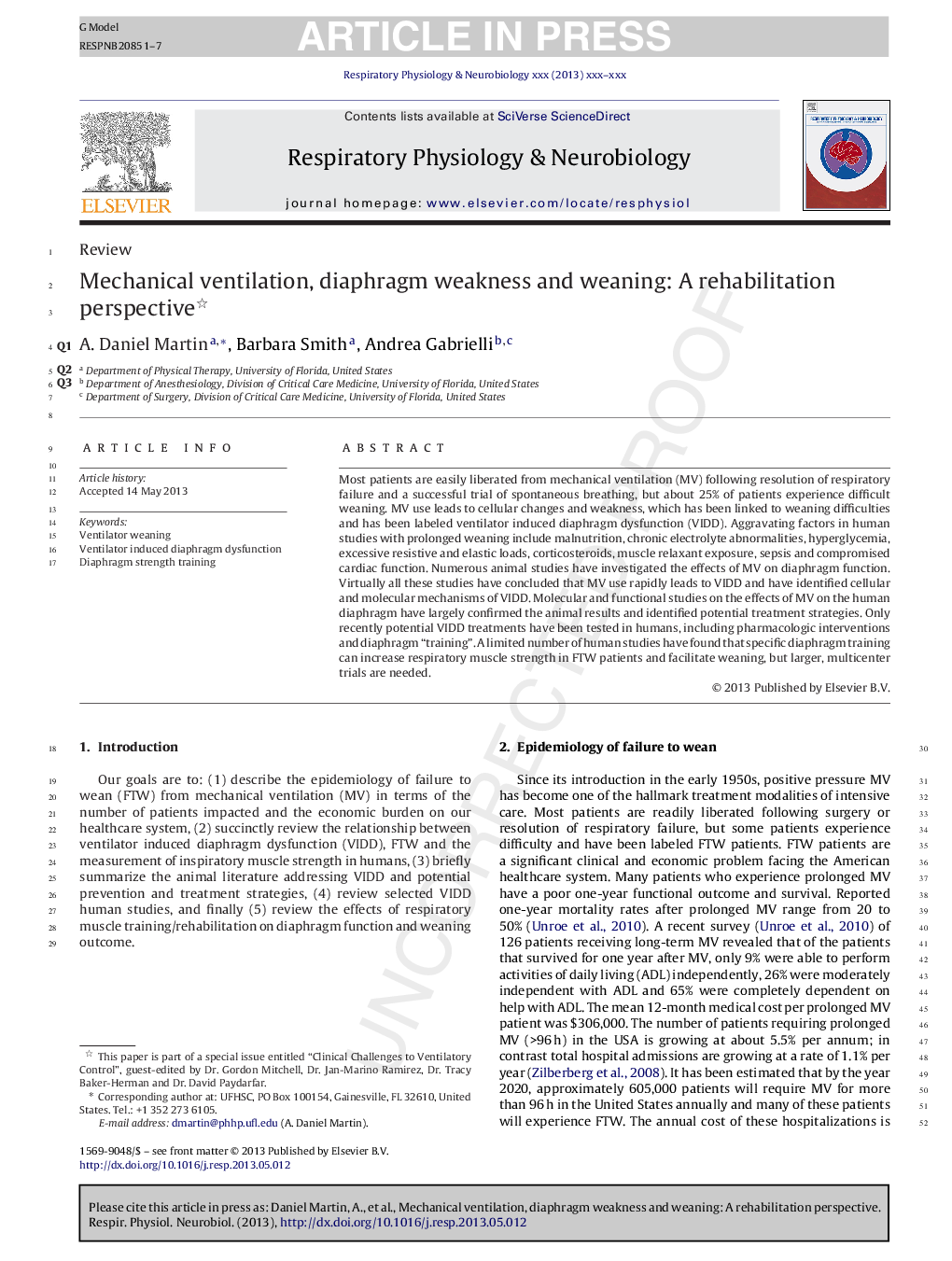| کد مقاله | کد نشریه | سال انتشار | مقاله انگلیسی | نسخه تمام متن |
|---|---|---|---|---|
| 5926012 | 1167332 | 2013 | 7 صفحه PDF | دانلود رایگان |
عنوان انگلیسی مقاله ISI
Mechanical ventilation, diaphragm weakness and weaning: A rehabilitation perspective
ترجمه فارسی عنوان
تهویه مکانیکی، ضعف دیافراگمی و از بین بردن: چشم انداز توانبخشی
دانلود مقاله + سفارش ترجمه
دانلود مقاله ISI انگلیسی
رایگان برای ایرانیان
کلمات کلیدی
از بین بردن ونتیلاتور، دیافراگم اختلال ایجاد شده توسط ونتیلاتور، آموزش قدرت دیافراگم،
موضوعات مرتبط
علوم زیستی و بیوفناوری
بیوشیمی، ژنتیک و زیست شناسی مولکولی
فیزیولوژی
چکیده انگلیسی
Most patients are easily liberated from mechanical ventilation (MV) following resolution of respiratory failure and a successful trial of spontaneous breathing, but about 25% of patients experience difficult weaning. MV use leads to cellular changes and weakness, which has been linked to weaning difficulties and has been labeled ventilator induced diaphragm dysfunction (VIDD). Aggravating factors in human studies with prolonged weaning include malnutrition, chronic electrolyte abnormalities, hyperglycemia, excessive resistive and elastic loads, corticosteroids, muscle relaxant exposure, sepsis and compromised cardiac function. Numerous animal studies have investigated the effects of MV on diaphragm function. Virtually all these studies have concluded that MV use rapidly leads to VIDD and have identified cellular and molecular mechanisms of VIDD. Molecular and functional studies on the effects of MV on the human diaphragm have largely confirmed the animal results and identified potential treatment strategies. Only recently potential VIDD treatments have been tested in humans, including pharmacologic interventions and diaphragm “training”. A limited number of human studies have found that specific diaphragm training can increase respiratory muscle strength in FTW patients and facilitate weaning, but larger, multicenter trials are needed.
ناشر
Database: Elsevier - ScienceDirect (ساینس دایرکت)
Journal: Respiratory Physiology & Neurobiology - Volume 189, Issue 2, 1 November 2013, Pages 377-383
Journal: Respiratory Physiology & Neurobiology - Volume 189, Issue 2, 1 November 2013, Pages 377-383
نویسندگان
A. Daniel Martin, Barbara K. Smith, Andrea Gabrielli,
